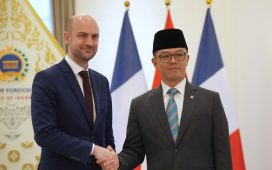For more than 150 years, we have been living with terrorism. Like an inherited illness, it is passed from generation to generation. Waves of violence succeed one another. Early anarchists, fascists, 1960s revolutionaries, hijackers of the 1970s, militant nationalists in the 1980s, Islamist extremist or extreme rightwing hatemongers, all are variations on a dismal theme.
Decades of security strategies and debates over definitions have come to no conclusion about the elusive “root causes” of terrorism. Since the 9/11 attacks of 2001 we have seen the most sustained research effort ever made. This has led to much deeper knowledge and innumerable thwarted plots, but not a foolproof answer as to how we can prevent a relatively small number of individuals causing massive disruption, loss of life and instability on a planetary scale with a single act.
We still do not know who exactly planned the attacks into Israel launched by Hamas on 7 October, but we are fairly sure that they are not numerous. The demands of security will have meant only a handful of people will have conceived and planned an operation which led to the deaths of more than 1,400 people, mostly civilians, and plunged the region into one of its deepest crises for many years. Israel’s retaliation in Gaza has sent further shockwaves across the world. The power that terrorism gives an individual, or a small group, to shape events in such a dramatic way may be one reason for the persistence of the phenomenon.
This can be contested, of course. A political scientist will point to the multiple background factors that enable a given terrorist attack to have such potent consequences, seeing merely a spark that fires the existing combustible material. A historian will describe the long and often dismal path that culminates in any such violent event. Experts may possibly point out that the consequences are only rarely those anticipated or desired by the perpetrators, which should dissuade but doesn’t.
Because this is not how it seems to those who use terrorism to effect radical change, to disrupt a political process they oppose, force a country to change its policies and attitudes, to propagandise, radicalise and polarise, or simply terrorise. To them, denying that the use of murderous violence confers power to shape the course of events would appear nonsensical.
This explains why there is often so much argument over who exactly is responsible for any attack. Is it a small group operating independently, or are they proxies for a more powerful actor? There is a long history of states blaming the “hidden hand” of a nefarious sponsor. In the early 1980s, President Ronald Reagan’s officials blamed the Soviets for the surge in terrorist violence around the world. Moscow certainly encouraged some such activity, but to point a finger at the rival superpower was to fundamentally misunderstand what was happening.
Stunned and bewildered by the 9/11 attacks, some officials in the administration of George Bush erroneously decided al-Qaida could not have acted alone but that a state – Iraq – must have been involved. Or at least would be behind the next such onslaught. Today, rival states continue to exchange accusations of fomenting terrorism. Sometimes such charges are justified. Often not.
Now there is argument over the terrorist attacks in Israel. Iran has a motive and the means, and has long supported Hamas with funds, weapons and much else. It also has a history of sponsoring violence elsewhere in the region. US officials say there is no clear evidence of direct involvement and that senior officials in Tehran were surprised by news of the carnage in southern Israel. Whatever the truth, security concerns would have meant that the number of those who planned and organised the attack was still very small, quite possibly only in single figures.
But if the apparent power such violence confers may explain the twisted attraction of terrorism for some, it does not explain why have we not found a means to inoculate ourselves against the disease. Perhaps we simply cannot.
In most of the world, the many systems created to protect us from the violence of others function remarkably well. Our lives are usually free of such threats. Many people never see a dead body. We don’t see murders on our streets. But you only need to spend a short time in a country without a functioning government, criminal justice system and security services to understand quite how fragile this achievement is.
This makes the sudden irruption – defined by Collins English Dictionary as a breaking or bursting in; an incursion or invasion – of violence into our lives all the more shocking. Terrorism makes us feel profoundly, existentially vulnerable. Understandably, the threat feels proximate. Even if we know that it is statistically extremely unlikely, it feels as if next time it could be our aeroplane that is attacked, or our office, our train, our children’s school, our homes.
Terrorism exploits the gap between our hopes that the many can be protected from the violent few and the reality that any such protection can only ever be incomplete. This is why it can have such devastatingly destabilising effects, and so why, as a tactic, it continues to be attractive to some.
This was true 150 years ago, it is true now, and no doubt will be in decades to come. We will still be searching for a cure for terrorism then too.
Jason Burke is the international security correspondent of the Guardian
Do you have an opinion on the issues raised in this article? If you would like to submit a letter of up to 250 words to be considered for publication, email it to us at observer.letters@observer.co.uk










